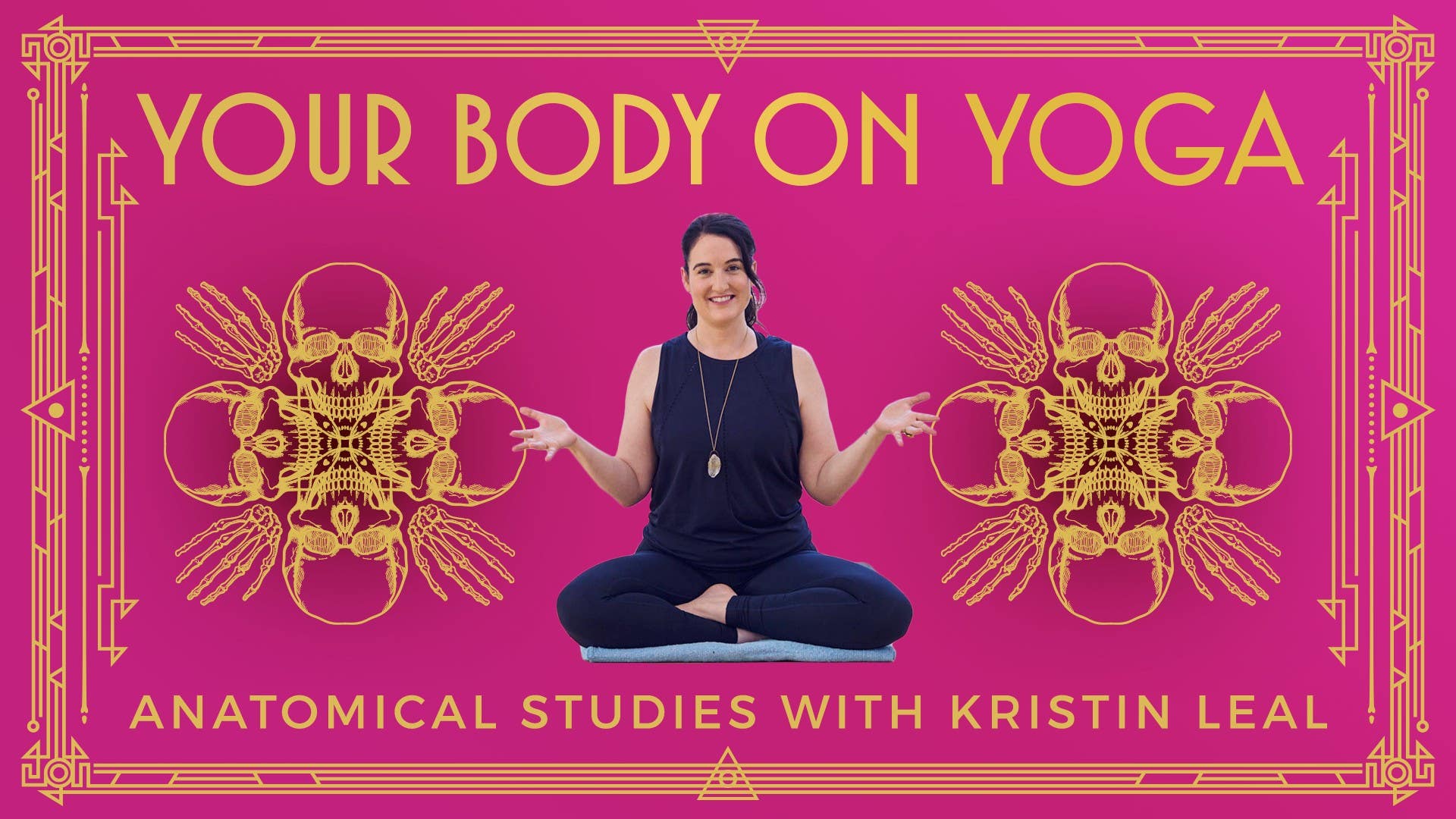Description
Please see attached .pdf to go along with this lesson.
About This Video
Transcript
Read Full Transcript
You might think that you have flat feet, but you actually have these muscly and bony arches in the feet that provide even more stability, strength and springiness as we are upright critters and that becomes very important to us. Everything that you're doing in the feet, while it may not be the sexiest thing to talk about, it supports the health of the knees, the health of the pelvis, the health of the lower back, really the health of the whole body. Because we're upright and standing on them, the foundation is what we look at in the dress first. So, even if you think you might have flat feet, you might have started, if you've ever been scuba diving and you put on those little flippers on the boat and then you have to somehow get to the edge of the boat to jump off, the walking is so just awkward, you have to pick your legs way up, you have to kind of flop them down, it just feels like a very different experience. This is why these arches help us have more efficiency, more elegance in movement.
So I'm going to try to draw them, again, I'm not the best artist, so forgive me. Not a kidney bean, not Africa, but I'm trying to draw the sole of your foot to make it a little easier, here are your little bare toes. Alright, so if you're looking at the underside of your foot, sole of your foot, this is your calcaneus, this is your big old big toe and your pinky toe, here's the outside of the foot and the inside or medial part of the foot, just to orient you in case you're not picking it up from this drawing. Alright, so we have actually three defined arches in our foot, so let's look at what's considered the lateral arch, so this is on the outside of your foot and you can take a look at your own or mine, this is just this outer arch of the foot, then we have our medial arch of our foot, the inner arch of our foot, and then we have one that goes across the ball of the foot, and this is our transverse arch, going across the ball of the foot, like a bridge. Now if you look at your own foot, which is the most impressive of the arches?
I think most of us would say this medial arch, in fact if you were to walk on the beach in the sand, you may not even see a little impression in the sand on the inside part of the foot. So I'd say this is like the first place winner, gold prize. Then if you look and go, well, lovely foot, but which is the least impressive of the arches? I'm going to say most of us would say the lateral arch wins the bronze, right? And then if we were to go, okay, well, that's the one in the middle, the silver prize goes to the transverse arch.
Now this is for a reason, we are meant to heel strike when we walk, that big old calcaneus taking the brunt of the force, we're supposed to roll to the pinky toe on this kind of least impressive of the arches, move across the ball of the foot, across the transverse arch towards the kind of bunion side of the foot where your big toe meets your metatarsals, and then push off from this really impressive medial arch in that giant big toe to give you more bang for your buck with a little investment, right? So we're using the arches in our foot to better ambulate, which is a fancy word for walking, but we can also utilize these arches in our yoga practice. We have this glorious thing where we're usually barefoot in our practice, we're asked to spread our toes or lift our toes or press the outer foot into the floor or the inner foot into the floor. We're really asking for a lot of, to reclaim a lot of that mobility we have in our foot. We actually all have it, but since we're stuck in shoes for most of our day, most of our life we tend to forget, we lose connection to the earth, to the grounding, to that element of foundation.
So using the feet in the practice already pretty healthy. You might start to notice though, as you're being asked to do all this kind of manipulation of the foot in the arches, you get foot cramps quite often, right? That's usually, there are muscle going, I'm not getting what I need, what are you doing? You haven't asked me to work in years and kind of flipping out a little bit. So reclaiming these muscle arches almost like your foot is a, like a suction cup on the floor and you're slurping up the arches of your feet.
Give us a better balance, strengthens those muscles, brings a little bit more articulation into the foot. Now you might have heard of something called planar fasciitis, pretty common for yogis just for humans to start developing. If you thought this was bad, wait to see what's coming up next. So here's a side view, oh goodness, of your foot, oh hi, okay, oh my God, okay. So here's your toes, it's one of my better ones actually.
So from your calcaneus to where your toes meet your rest of your foot, the phalangeal metatarsal joints, you have a sheet of tissue and this is a special kind of piece of fascia that just kind of like a piece of saran wrap, keeps everything that's going, all those ligaments, bones, muscles, nerves, blood flow, kind of keeps all that bowl of spaghetti in the bowl, in the arches of the foot. Now you have life, gravity and shoes working a bit against you here and there's a tendency to lose a little bit of the arch as gravity just kind of takes over, the foot spreads, you get a little closer to the earth. And that pulls and aggravates that planar fascia. One thing that a lot of times people will say, well take one of those balls and roll the foot on the ball or take a frozen bottle of water, like a plastic bottle of water, put it in the freezer and roll your foot on that. That's brilliant, you get the ice which is kind of taking some of the inflammation away, makes it feel a little bit better, you get the rolling that unsticks some of the sticky tissue but the second phase of that is to reclaim the muscly arches, otherwise it's just going to reinflame, re-aggravate and cause some drama in the feet.
Use your feet well, it will last a lifetime, reclaim these muscly arches.
Your Body on Yoga: Lower Appendage
Comments
You need to be a subscriber to post a comment.
Please Log In or Create an Account to start your free trial.












